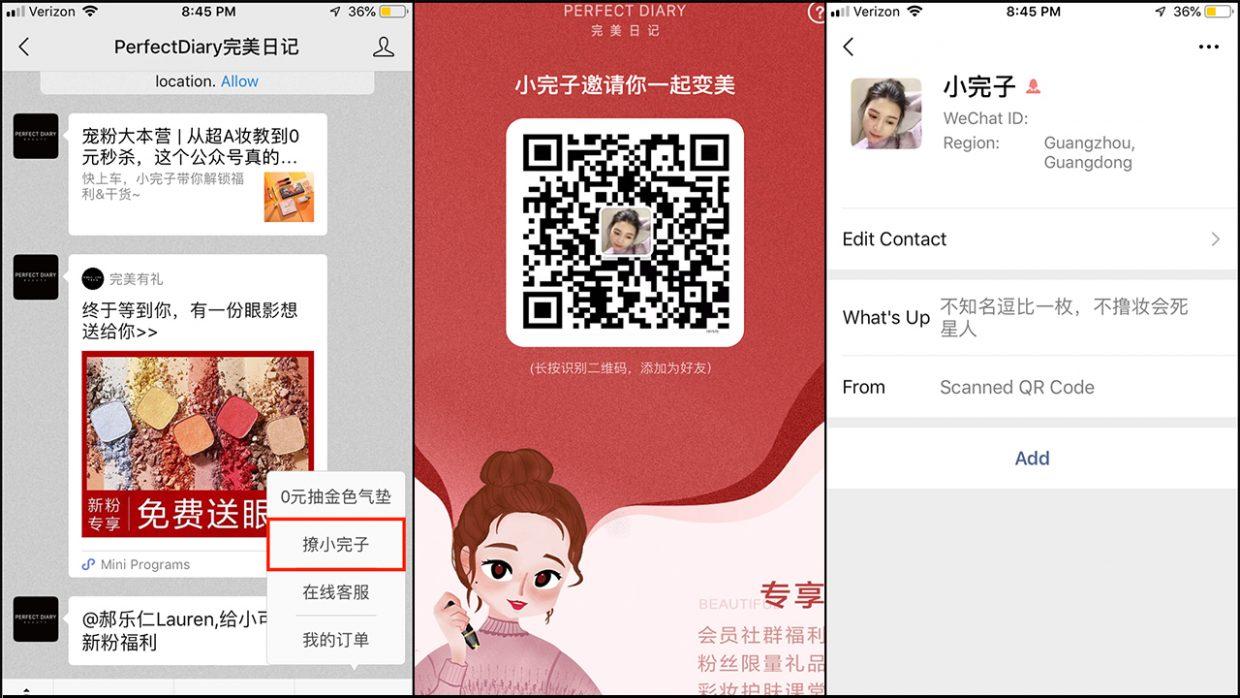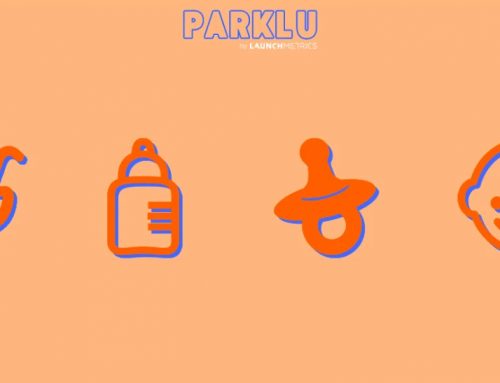“Private traffic” is one of the biggest buzzwords in Chinese marketing right now, and figuring out how brands can apply it could make all the difference in 2020. By understanding what exactly this esoteric concept refers to, who is using it and how it works, brands can start winning the private traffic strategy game and unleashing the latent influence of Key Opinion Customers (KOCs), which is helpful for brands while doing KOL marketing in China.
What is “Private traffic”?
The term “private traffic” refers to the ability to reach customers and drive sales via closed channels, private forums where brands otherwise might not be able to reach the consumer.
There are several key differences between “private traffic” and “public traffic”:
Public traffic needs to be paid for and is usually generated once per paid campaign, thus creating a higher acquisition cost per customer. In this case, the customers reached aren’t a controlled group.
Examples of platforms that generate public traffic include:
- Search engines and other information distribution platforms like Baidu, Sohu, and Toutiao
- Public community-based forums like Zhihu (similar to Quora), and Douban
- Short video platforms like Douyin, Kuaishou, and Miaopai
Private traffic, on the other hand, is traffic that is specifically owned by the brand or the individual (think newsletters or email chains in the U.S.). Traffic that is generated in this way can be used and targeted repeatedly, free of charge. This traffic can also be monetised through traditional or native advertising strategies.
Examples of platforms that generate private traffic include WeChat official accounts, WeChat personal accounts, WeChat friends’ circles and groups, and other messaging-based platforms like QQ.
Private traffic helps with KOL Marketing in China
The logic of private traffic is simple. In traditional marketing, each customer is acquired at a certain cost, with a certain pain—so what can brands do to retain customers and drive repeat business? Leveraging private traffic is a clever response to this challenge, a way of keeping the conversation going beyond the first purchase. In due course, the brand aims to inspire each customer to become an enthusiastic brand advocate, a foot soldier in a cultivated community of hardcore fans.
Harnessing private traffic is also a guerrilla tactic that addresses a specifically Chinese marketing challenge: In the U.S., for example, brands use owned channels like email marketing or websites to cultivate customer affinity. Neither of these is effective tools for the China marketer, but brands like Perfect Diary and Luckin have improvised, creating their own private traffic-based alternatives to traditional “owned” communities, especially after the brands have done KOL marketing.
Finally, private traffic empowers brands to interact with their customers directly, bypassing the pay-to-play logic that gatekeepers like Taobao and Tmall want to preserve as the norm in Chinese e-commerce.
Traditional KOLs to KOCs
KOL marketing in the traditional sense is here to stay. Influencers remain powerful gatekeepers and tastemakers whose endorsements can place a brand squarely in the hearts and minds of hundreds of thousands of Chinese millennials and Gen Z consumers. Savvy brands know this and put KOL marketing at the core of their strategy in China. However, breaking the concept of influencer marketing down to the tactical level, PARKLU considers leveraging private traffic a matter of KOL marketing best practice and urges brands to view private traffic as a supporting factor in broader KOL marketing efforts.
KOLs, brands and self-owned media groups all help convert public traffic into private traffic, and once they’re established, it is easy to retain, accessible, and repeat sales come easily. This can reduce marketing costs and improve conversion rates.
There are numerous approaches to establishing private traffic channels. In one sense, brands can try to cultivate influencer communities, grouping KOLs who are already friendly within “private” spaces and generating discussion in order to further those bonds between influencer and brand. Consequently, the brand may receive further endorsements from the influencer, whether on their owned channels or via their own “private traffic”.
Of course, while brands can work to cultivate their own private traffic channels, they can also team up with KOLs on private traffic strategies. KOLs are well-placed to develop their own private traffic pools, which could be highly segmented based on follower behaviour, for example. Brands might tap directly into KOLs private traffic. Alternatively, a brand might partner with a KOL on a campaign to drive registrations to the brand’s newly established private traffic channel, or create content to generate buzz and conversation within the channel. These strategies work especially well in categories where repeat purchases are common, such as beauty, personal care, and subscription-based products.
In another sense, however, private traffic means recognising the latent potential of every first-time customer to emerge as an influencer in their own right, if at a smaller scale than big-ticket KOLs. Rather than thinking about “customers”, think of everyone who buys a brand’s products as a potential Key Opinion Customer or KOC. A KOC is an evangelist for the brand, willingly sharing information via social media and word of mouth. Most importantly, these super-fans are trusted in their own networks, and the ripple effect goes on. In fact, a clever private traffic strategy could cultivate battalions of loyal KOCs prepared to advocate for a brand on multiple fronts, including taking the message back to the big-name KOLs.

How brands leverage private traffic
Private traffic starts at the point of sale. At this point, the brand provides a hook—an offer, a QR code—that provides the customer with a call to action that entices them to join the brand’s private traffic space. At this point, brands may wish to segment customers into specific private traffic groups based on what they purchase or their demographics.
Once the group is established, it’s the brand’s job to curate the private traffic space. This means generating discussion and creating a compelling atmosphere that the customer wants to be part of. It also means regularly encouraging customers to buy again from the brand. On a recent episode of the China Tech Talk podcast, Chinese tech writer Matthew Brennan talked about spending time in private traffic groups. According to Brennan, the goal is “creating a sort of environment where people can learn about your brand, posting useful information—you’re definitely doing content marketing—but you’re also encouraging sales and repeat purchases.”
WeChat’s mini-programs offer a useful tool for a brand looking to experiment with content in a private traffic group, with features like group discounts and flash sales. Crucially, purchases via mini-programs are smooth and relatively hassle-free, which helps brands increase conversions. In turn, private traffic transactions are good news for WeChat, driving customer acceptance of mini-programs and diverting some traffic and fees away from Alibaba and rival e-commerce platforms.
Case study: Perfect Diary
Guangzhou-based beauty brand Perfect Diary is one of the emblematic case studies of the concept. While doing KOL marketing in China to gain more brand awareness among a targeted group of consumers, the brand has used WeChat groups to assemble “private traffic” following that’s estimated to number one million fans. When a customer buys a Perfect Diary product, they’ll receive a card featuring a special offer. The “catch”, as it were, is that to redeem the offer, the customer has to connect with the “personal” WeChat account of a lady called Xiao Wan, an avatar who acts as a kind of brand ambassador. By connecting with Xiao Wan, the customer joins a WeChat group full of fellow Perfect Diary Customers.

Image sourced from “Fictional Influencer “Xiao Wanzi” is Perfect Diary’s Secret to Success“
Inside its groups, Perfect Diary uses content to achieve the twin goals of fostering a sense of community while regularly planting seeds—discounts, holiday tie-in offers—that encourage KOCs to keep buying. Of Perfect Diary’s insider groups, Brennan said, “there are different types of content, and there really is an atmosphere they create of sharing tips and hints, people sharing pictures of what they’ve done with the makeup, so there’s really a community atmosphere.”
If all that sounds like running any old WeChat group, here’s where private traffic involves a manual, labour-intensive team effort, according to Brennan. WeChat groups have a maximum of 500 members, so a successful private traffic campaign like Perfect Diary’s will soon spin out across many WeChat groups. And since WeChat’s personal accounts have a maximum follower count of 5,000, a brand needs to run multiple personal accounts, perhaps spread across several phones. So for example, a brand managing 1,000,000 private traffic followers, as Perfect Diary reportedly has, would require 2,000 separate WeChat groups and 200 WeChat accounts.
Private traffic platforms
Given China’s mobile-centred online economy, which renders email and search engines more or less irrelevant in comparison to their role in online marketing in Western countries, it’s inevitable that WeChat is where private traffic initiatives would begin. However, private traffic is not limited to WeChat. Private traffic can be leveraged on any platform or forum where niche discussion groups are happening, anywhere that access to a conversation is invitation-only, or for high-value luxury products and services, even a one-on-one conversation could be regarded as a form of private traffic. Even the traditional e-commerce platforms are opening avenues for private traffic, with Taobao now allowing users to “subscribe” to favourite stores for updates on the latest products and offers.










Leave A Comment